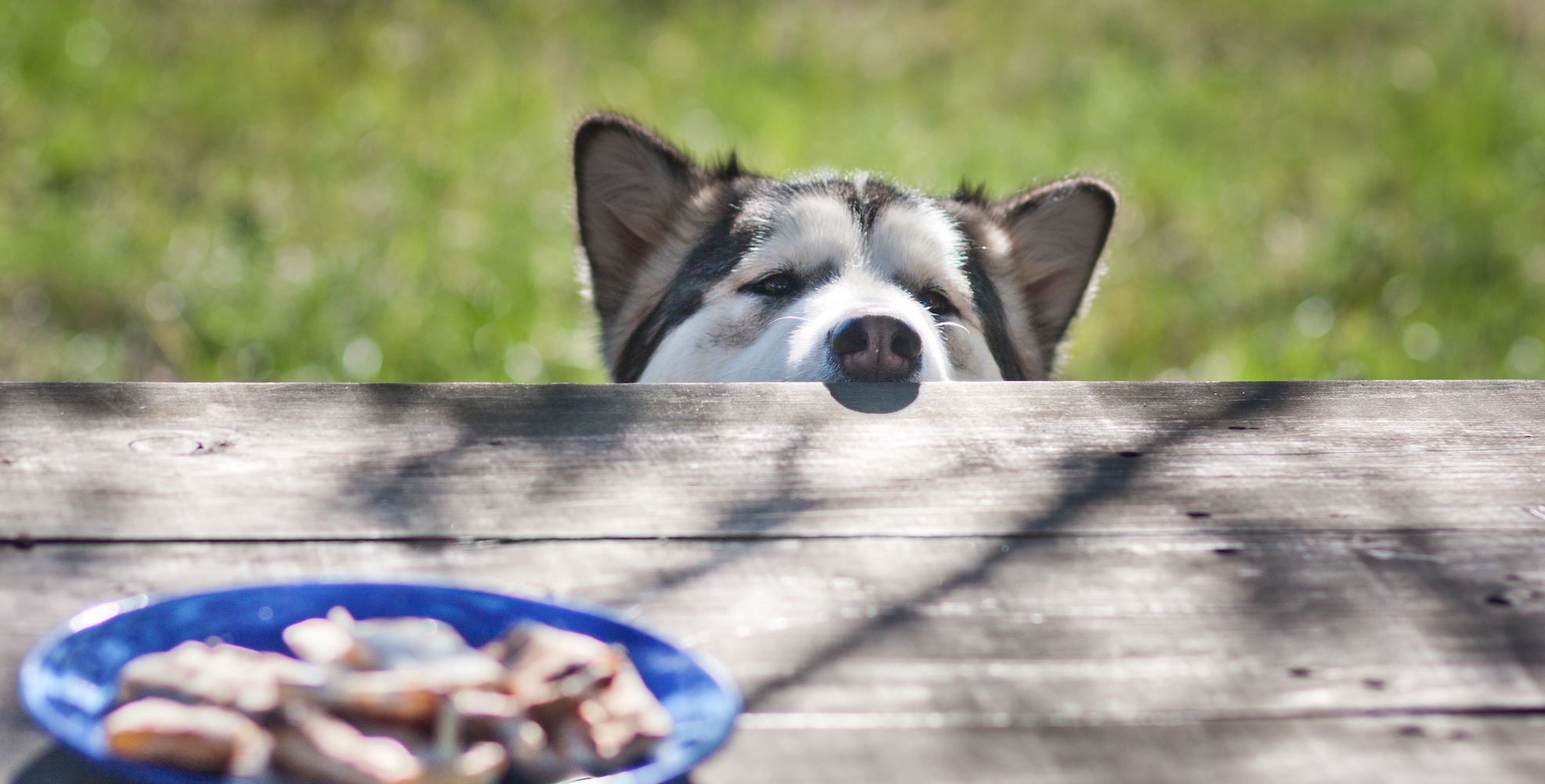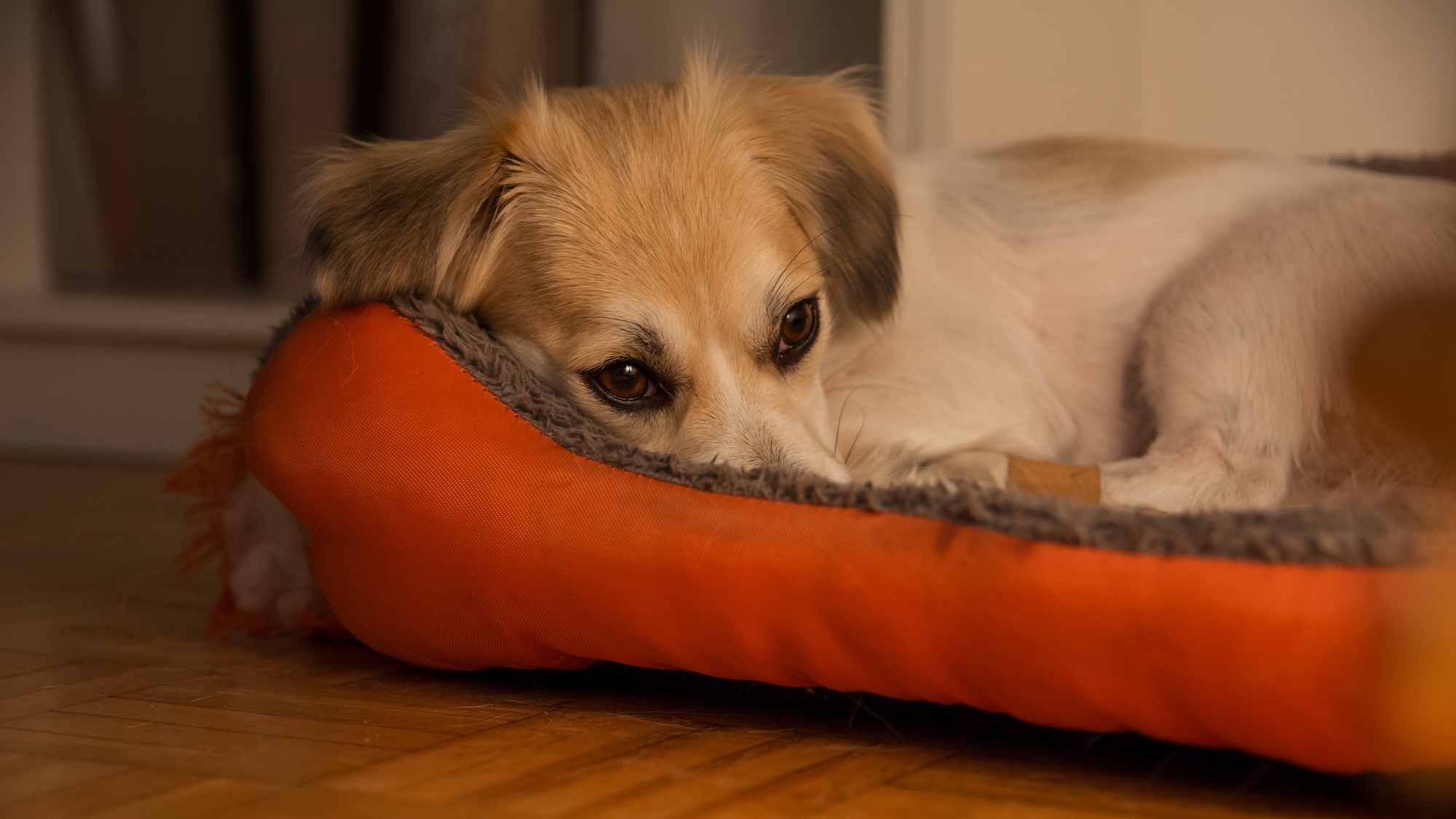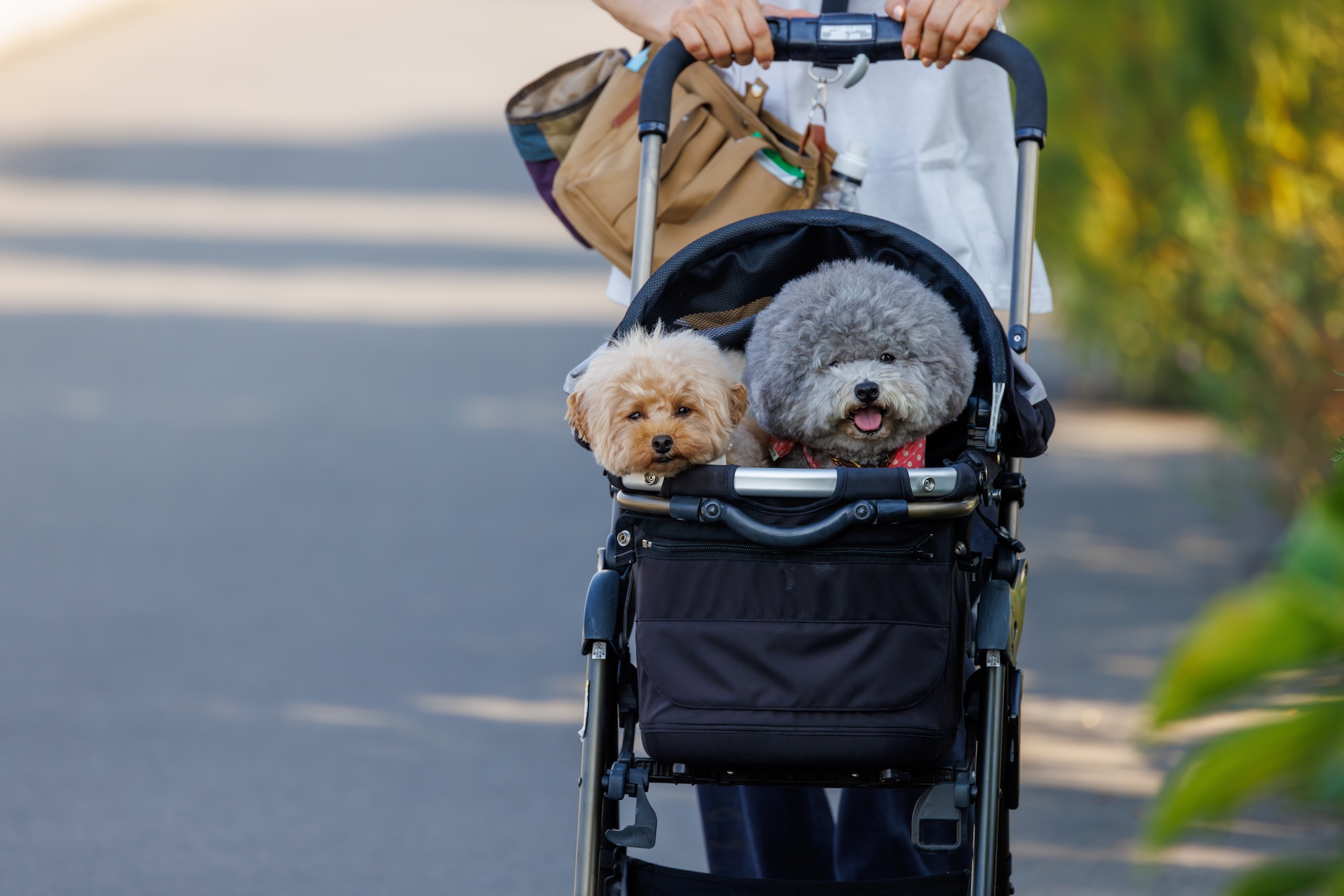A woman pretends to fall asleep on the couch, one hand dangling at her side, loosely gripping a piece of cheese. Her loyal dog has presumably enjoyed cheese in the past. But he’s used to waiting for permission before grabbing any treat—so, as he eyes the snack and his human, he seems uncertain about what to do.
Perhaps you’ve seen a video like this on social media and wondered what a dog’s perplexed reaction to such a turn of events may mean.
We’ve all heard the claim that dogs live entirely “in the moment”—but a pooch not being sure whether to grab cheese in a fit of YOLO would seem to indicate that they have some degree of impulse control. So what stopped many of the dogs in those videos from reaching out and grabbing the cheese right away? What made others see a big green light? And how can humans help dogs harness their powers of self-control? Here’s an overview.
Dogs can demonstrate inhibitory control
Dr. Sarah-Elizabeth Byosiere, a Certified Applied Animal Behaviorist and the former Director of the Thinking Dog Center at Hunter College in New York City, says that what we’re calling “impulse control” usually goes by the name “inhibitory control” in studies of dogs. Inhibitory control, she says, “is basically what we call an executive function.” Dogs who have good inhibitory control can pass up something they want right now—like a tasty piece of cheese—because doing so will lead to something more beneficial, like a larger reward.
Scientists have tested this in dogs through multiple methods, including a “cylinder task.” In this task, dogs can see a treat through a transparent cylinder, but if they go straight at it they’ll be obstructed by the surface. To actually get the treat, they’ll have to navigate around it. “An inefficient response there,” says Dr. Byosiere, would be, “Oops, I’ve booped my snoot on the plastic surface trying to get through.” The beneficial response, by contrast, would be, “Okay, I can’t go right at it—I need to turn and put my head in through the side.”
This isn’t the only test scientists use to measure dogs’ inhibitory control, and there’s some disagreement over what it actually tells us—much as there’s debate over exactly what the famous “marshmallow test” measures in human children.
Regardless of what any test of your dog’s restraint and judgment may or may not prove, make sure you run it kindly. Dr. Marc Bekoff, an ethologist and the author of The Emotional Lives of Animals, cautions that, if you’re going to investigate whether your dog can resist a treat in your hand while you pretend to sleep or not pay attention, the activity should be enjoyable and enriching for them—not a way to tease them, and certainly not a chance to entrap them and then scold them for doing the “wrong” thing. “I can imagine,” he says, “some people would yell at the dog and say, ‘I told you not to take it!’—and that’s unfair.” To state the obvious, your dog has no way to understand that you think “stealing” the cheese is somehow wrong.
Also, be aware that if you’ve trained your dog to wait for treats, repeating exercises like this habitually may lead them to “unlearn” those good habits. Don’t worry—you’re not likely to undo years of training by tempting them once. But dogs do like when it’s easier to understand and predict what their people are asking of them.

Dogs’ self control varies depending on the context
Whether a dog grabs a piece of cheese from their person who’s pretending to sleep won’t tell you how much self-control they have in general—and, apparently, neither will the results of the cylinder task.
A 2017 study published in Frontiers in Psychology, entitled “Measures of Dogs’ Inhibitory Control Abilities Do Not Correlate Across Tasks,” found that 67 dogs’ performance at one task intended to measure inhibitory control didn’t necessarily translate to better results in another—or to their humans evaluating them as less impulsive in survey responses. Individual dogs’ ability to control their impulses or delay gratification seemed to vary depending on things like the task at hand and the reward involved. “The jury’s still out,” says Dr. Byosiere, “on whether these tasks are actually effective at measuring inhibitory control.”
Dr. Bekoff says that a dog’s willingness to wait for a treat might even change depending on their relationship with the person holding it or watching them. “I know couples,” he says, “who live with dogs—and they’ll go, ‘Joe knows that my husband or wife is much more or less permissive than me.’ So they’ll push one of them further, and maybe try things with that person [that] they wouldn’t with the other person, because the other person doesn’t like it.”
As far as rewards, Byosiere points out that it can matter how much your dog likes what’s tempting them. “What if your dog doesn’t like cheese?”, she asks. If so, resisting it may not be much of a feat.
If you’re trying to train your dog to be responsible in the face of temptation, avoid generalizing about them (“My dog just isn’t good at controlling herself”) or blaming them (“Why can’t he get it?!”) and instead find a fun way to get them used to acting the way you want them to.
Dogs are always trying to figure things out
In the case of videos where dogs see their humans pretending to sleep, the dogs’ behavior is influenced by more factors than whether they can “control themselves.” They may also be trying to figure out exactly what’s going on in an unfamiliar scenario. You may think you seem to be sleeping, but that doesn’t mean that your dog buys it. And, in the wild, guessing wrong about whether another animal is awake can have consequences.
“I’ve seen situations with dogs, and wild coyotes especially,” says Dr. Bekoff, “where it’s not that the animal who is taken to be sleeping is playing around—but they’re resting and fully awake. So they can hear, smell, or see that something is going on around them that they don’t like—and maybe ‘Joe has come over to take my ball, my bone, or my rag.’”
Dr. Bekoff has seen street dogs delay gratification strategically. “They want to steal something from a butcher shop or a food shop,” he says, “And they’ve learned that if the butcher or someone in the food store is there, they should not go—so they’re delaying gratification, but for good reason. And when they know that the human isn’t there, they go in and steal food.” However, there are personality differences—some dogs, for whatever reason, make bolder attempts than others.
In one of Dr. Bekoff’s books, he writes about a Beagle who executed an intricate plan to get to chicken nuggets in a toaster oven: Pushing a chair into place so he could jump onto a counter, open up the device, and retrieve the snack—controlling his impulses, planning, and using the chair as a tool.
Every dog is different
A 2022 study in which 992 dogs completed the cylinder task found some differences among breeds. Border collies and Australian shepherds did better on average, whereas Malinois and German shepherds had more trouble. Older dogs made more mistakes in this experiment than younger ones, and male dogs made more mistakes than female dogs.
Dr. Byosiere says that the apparent breed differences may have to do with working dogs’ jobs. “It depends on the career path,” she says. “We can’t lump all working dogs together. We kind of have to think about—what is the role they’re going to be in, and what are we training them for?” Some working dogs, she says, need to listen more closely to their handlers, whereas others may benefit from thinking more independently.
A Labrador retriever owner herself, Dr. Byosiere mentions recent research into the breed finding that, basically, many of them feel hungry all the time. “When I say my dog would eat the cheese,” she says, “it could be that it has nothing to do, really, with impulse control… maybe she has this gene where she can’t leave food behind. Maybe there’s no judgment call there for her—it’s just, ‘I’m starving, and there’s cheese there. Why wouldn’t I eat it?’”
Dr. Bekoff notes that dogs’ individual histories matter, too. He’s had dogs who were experts at waiting, and others with less restraint. One of them, Jethro, spent time as a stray earlier in his life, fending for himself. Dr. Bekoff speculates that this time may have taught Jethro to grab food whenever he could get it, because the opportunity might not arise again.
Dr. Byosiere emphasizes that, even if your dog doesn’t meet your expectations of their breed or dogs in general, or what these studies found, that doesn’t mean something is wrong with them. “You might see differences in your home, and that doesn’t mean that your dog is any less of a dog—or any less when it comes to their skill and their cognitive abilities to navigate the world. So don’t get hung up on comparing, because probably your dog is the best dog for its given environment, and the circumstances that are being tested in these cases may come from unique or smaller sample sizes that aren’t representative of every individual.”
Training helps
The research on dogs’ inhibitory control is complex, but one almost sure thing is that, if you want your dog to have better self-control, your best course of action is to train them—in a way that they find rewarding—to do so. Plus, training is a great way to have fun and build a stronger bond with your dog.
The authors of a recent study published in the journal Animals wrote that, out of the dogs they studied, those who’d been trained in scent work showed better impulse control in two tasks than those who hadn’t been.
And many specific training tasks involve dogs giving up something that may be attractive in the moment for a higher priority—like a bigger reward. If you train your dog to “wait,” “leave it,” or “drop it”—or to come when called even if they’re mid-wrestle or hot on the trail of an exciting scent—you’ll be helping them live a happier, safer life in the long run.




